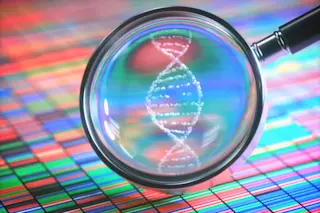Would you purchase a book with over 98 percent of the text written in gibberish? Biology has no business in the book industry, yet it still writes a pretty fascinating guidebook: DNA. Our genetic manual holds the instructions for the proteins that make up and power our bodies. But less than 2 percent of our DNA actually codes for them.
The rest — 98.5 percent of DNA sequences — is so-called “junk DNA” that scientists long thought useless. The non-protein-coding stretches looked like gibberish sentences in a book draft — useless, perhaps forgotten, writing. But new research is revealing that the “junky” parts of our genome might play important roles nonetheless.
Nature has a peculiar way of writing. Our genetic script uses only four letters: A, G, C, and T. Long combinations of these letters make up our genes, which inform the construction of proteins. But the protein-making process is ...














